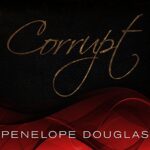Say Nothing: A True Story of Murder and Memory in Northern Ireland audiobook
Hi, are you looking for Say Nothing: A True Story of Murder and Memory in Northern Ireland audiobook? If yes, you are in the right place! ✅ scroll down to Audio player section bellow, you will find the audio of this book. Right below are top 5 reviews and comments from audiences for this book. Hope you love it!!!.

Review #1
Say Nothing: A True Story of Murder and Memory in Northern Ireland audiobook free
This book fulfills the needs of many of us who have relied upon limited accounts in US news media to understand the decades of “The Troubles” in Northern Ireland. Its detail complements what I learned during a visit to Northern Ireland in 2010 which helped me to understand the causes and impacts of the strife there and to anticipate the risks to the stability of the intervening two decades of “peace” which are threatened as decisions about post-Brexit borders loom.
My caveat about the value of the book is that for those who may not closely read and assimilate the information in the relevant pages, for example 274 and 333, the casual reader may reach the conclusion that the paramilitary republican groups were the initial, and the sole, perpetrators of violence. Sifting the books’ contents closely, one does find elements which negate that conclusion. On page 274 we learn that loyalist groups, supported by members of the British state, killed “hundreds” of civilians. On page 333, this charge is reiterated and the refrains, “What about Bloody Sunday?” and “What about Bloody Friday?” are charged as if in justifying one action by another. Further there are suggestions that the authorities may have tended to rely more heavily on transcripts that revealed violence by republicans than those of loyalists, perhaps because the latter might reveal the role that those authorities had played in league with the loyalists’ causes.
The complex nature of this tragic time should not be reached shallowly by readers’ impressions. I call for greater balance in leading to understanding what drove these events. In 2010, I visited the Bloody Sunday museum in Derry not long after British officials finally officially acknowledged that their earlier defense of the actions leading to the death of 14 individuals engaged in a peace march had not been accurate. Finally, after more than three decades, it was admitted that 14 innocent and unarmed peace marchers were mowed down, some killed by a shot in the back while running away, by a military acting without justifiable provocation. The author did well characterize the disproportionate violence by the authorities in his account of the marchers who were met by authorities at Burntollet Bridge but here the outcome was not as mortal even if it fueled the subsequent violence in reprise.
Personalizing the victim who was the widowed mother of 10 and following through with descriptions of the impact on her children might cause many readers to assign all the blame for The Troubles on the IRA. Having heard the story of an adolescent school girl who was killed by a rubber bullet from a military gun, her blood cleaned off the sidewalk by the mothers in the neighborhood, I had acquired a personal acquaintance with this victim of the authorities. By also personalizing the victims of violence that was brought by authorities, among these, the little girl hit by the rubber bullet or the 14 peace marchers who were intentionally killed, the author may have been able to achieve better balance. Surely, too, the author might have personalized a few of the victims among the “hundreds” that were killed by the loyalists? Knowing the innocence of those victims and the impact on their loved ones that followed from their senseless killing would have provided the balance that many readers might benefit from. Personalizing only one victim has rendered imbalance.
A close reader already acquainted with the events may not have needed a balanced rendering but those readers, so informed, may not have needed to read the book. I only “down-star” my rating because of concern that blame needs to be balanced so that cause is understood and change can be embraced. Staying in a B&B in Derry, we met a South African who was there to consult on Truth and Reconciliation. That program involves divulging guilt to achieve reconciliation. What can the perpetrators and victims of violence in Northern Ireland learn when there is balance among the blameful?
Review #2
Say Nothing: A True Story of Murder and Memory in Northern Ireland audiobook streamming online
I visited Northern Ireland as a psychologist, in 1997. I had been working with families of murder victims, and had the chance to learn about the differences between street violence in America and political violence in Northern Ireland. Nothing prepared me for what I found.
Keefe’s book is the best book I have read about the reasons for, and impact of, political violence in Ireland. It goes deeper into the minds and lives of IRA operatives than anything I have read. It is terribly sad. And it is chillingly detailed. This is truly one of the finest pieces of investigative reporting and narrative nonfiction I have ever read. One other thing: this book provides a warning for those in America who ever consider the use of paramilitary violence to achieve extreme ends.
Review #3
Audiobook Say Nothing: A True Story of Murder and Memory in Northern Ireland by Patrick Radden Keefe
After 40 plus years of researching Irish history and collecting 3500 books on Ireland and the diaspora, this book ranks in the top ten, if not in the top five. If you care an iota about modern Irish history, this should be the first book you buy this year. It is spectacular.
Review #4
Audio Say Nothing: A True Story of Murder and Memory in Northern Ireland narrated by Matthew Blaney
From the description of this book, I thought it was mostly about Jean McConville, the woman who disappeared during the Troubles. And I thought that the history of the Troubles would come second, but I was much mistaken. Jean is barely mentioned in the first half of the book and instead we are treated to an in depth discussion of what the Troubles were and what led to them, with introductions to far too many characters for me to keep track of. The more I read, the more I wished the author would finally start telling us about Jean, as that is what drew me to this book in the first place. It’s not until 40% that we start to find out more about Jean, and since the notes section starts at 60% of the total book, this is 2/3 of the way through.
The book itself is well-written and filled with interesting information. My main issues lies with the way it is marketed, or more accurately, what I perceived the book to be about. It is not a true crime book where we follow around detectives or amateur sleuths. More than anything, it is a modern history book about the Troubles, their legacy, and a few key players during this time. The McConvilles as a whole have a rather small part, despite what the description and the introduction would have you believe. Every time a new chapter started that introduced a new character and pushed the actual solving of the crime farther off, I found myself wanting to skim since I knew there was no way I was going to remember yet another name.
2.5 stars rounded up since it was more of a perception issue than an issue with the book itself.
Review #5
Free audio Say Nothing: A True Story of Murder and Memory in Northern Ireland – in the audio player below
This non-fiction account of specific lives during The Toubles in Northern Ireland is thoroughly researched and developed, and very well-written. I applaud Radden Keefe’s persistence over four years of study, research, and interviews to give us a compelling story of Jean McConville and her family, as well as other major players of the time–Gerry Adams, Delours Price, Brendan Hughes.
The IRA and its members often had a romantic and heroic place in the media, people who were willing to go to extreme lengths in the name of religious and cultural freedom. But those years happened well before 9/11 when terroristic violence, unfortunately, became a common crime. Reading Say Nothing perhaps exposed some of my own religious and cultural bias (I am an Irish Catholic), and forced me to see all the sides–the British, the Loyalists, the IRA–in a more objective light.
If I have any critique at all of the book, I would say that I wished it had moved a bit faster. I sometimes found myself having to refer to my mental roster to recall who was who, particularly as the time periods shifter frequently.
Galaxyaudiobook Member Benefit
- Able to comment
- List watched audiobooks
- List favorite audiobooks
GalaxyAudiobook audio player
If you see any issue, please report to [email protected] , we will fix it as soon as possible .






